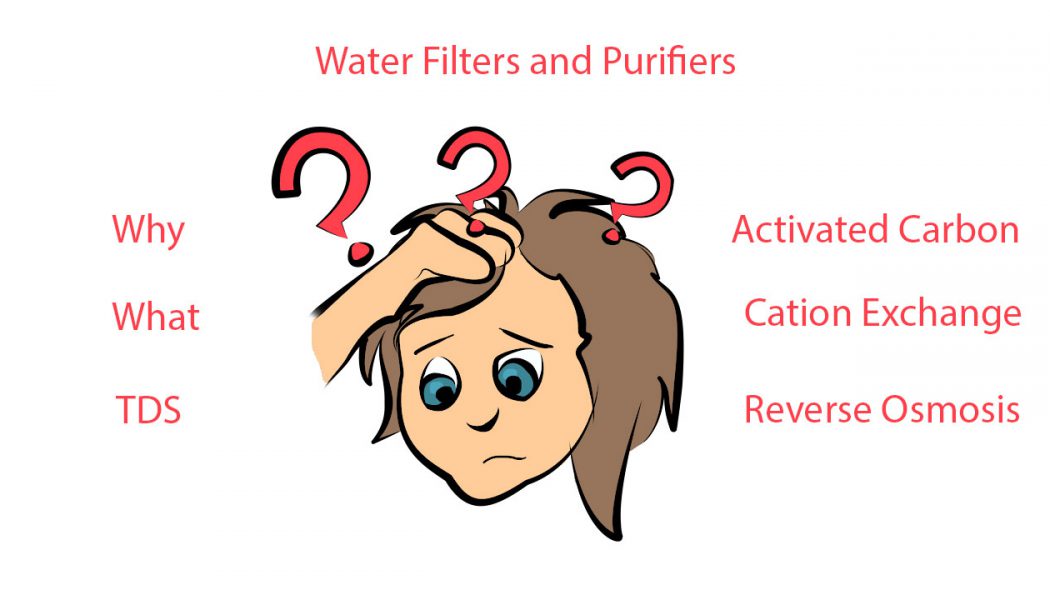There are many who use Water Filters at home whether we take water from an open well or from the public water supply lines (Tap Water). We have different types of Water Filters as well. Are Water Filters required or how do we select a particular type of Water Filter for us? Let us see some basics.
Ground water is the natural and purest source of water. It contains minerals, salt, lead and in some cases bacteria. The public water supply normally uses chlorine to purify water coming through the underground pipe lines.
Constituents of Water
Total Dissolved Solids (TDS) is the term used to describe the Inorganic Salts and small amounts of Organic Matter present in Water. Water mainly contains Calcium, Magnesium, Sodium, Potassium Cations, Carbonates, Hydrogen carbonate, Chloride, Sulfate and Nitrate Anions. The presence of dissolved Solids in water may affect its taste.
The most common method of determining the TDS in Water is the measurement of its Specific Conductivity using a Conductivity Probe. This detects the presence of Ions in Water. The Conductivity measurements are converted into TDS values by means of a Factor or Formula.
In the drinking water, the level of TDS is classified as follows.
- Excellent: Less than 300mg/litre
- Good: Between 300 and 600mg/litre
- Fair: Between 600 and 900mg/litre
- Poor: Between 900 and 1200mg/litre
- Unacceptable: Above 1200mg/litre
Water having extremely low concentration of TDS is also not acceptable. The concentration of TDS from natural sources have been found to vary from less than 30mg/litre to as high as 6000 mg/litre. It depends upon the solubilities of minerals in different geological regions.
Types of Home Water Filtration Systems
- Activated Carbon: Most common and least expensive. They remove parasites, chemicals and heavy metals that may present in water
- Cation Exchange Water Filter: They are called as Ion-Exchange Filters or Water Softeners. Negatively charged Ions of Barium, Calcium, Magnesium etc. can cause some health issues. The Negatively charged Ions are attracted by the Positively charged Ions in the filter system and thus the water is filtered
- Reverse Osmosis (RO): Almost all contaminants are removed by the RO Filters. Water passes through a semi-permeable membrane using air pressure. This is considered as the most effective home filtration system
We have seen basics of Water Filters and why we need one at home. We will look into more details in the next article.
Drink pure water and live healthy
